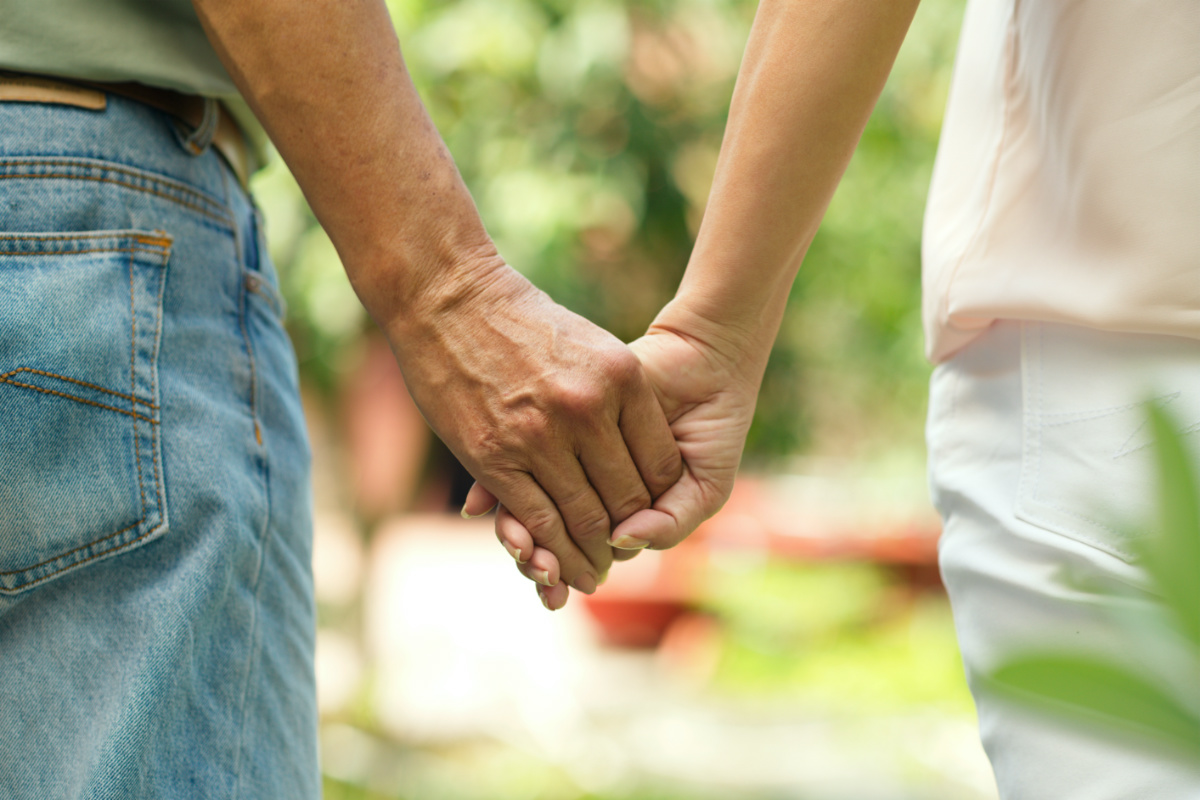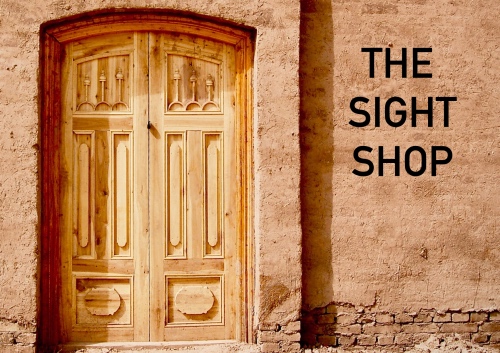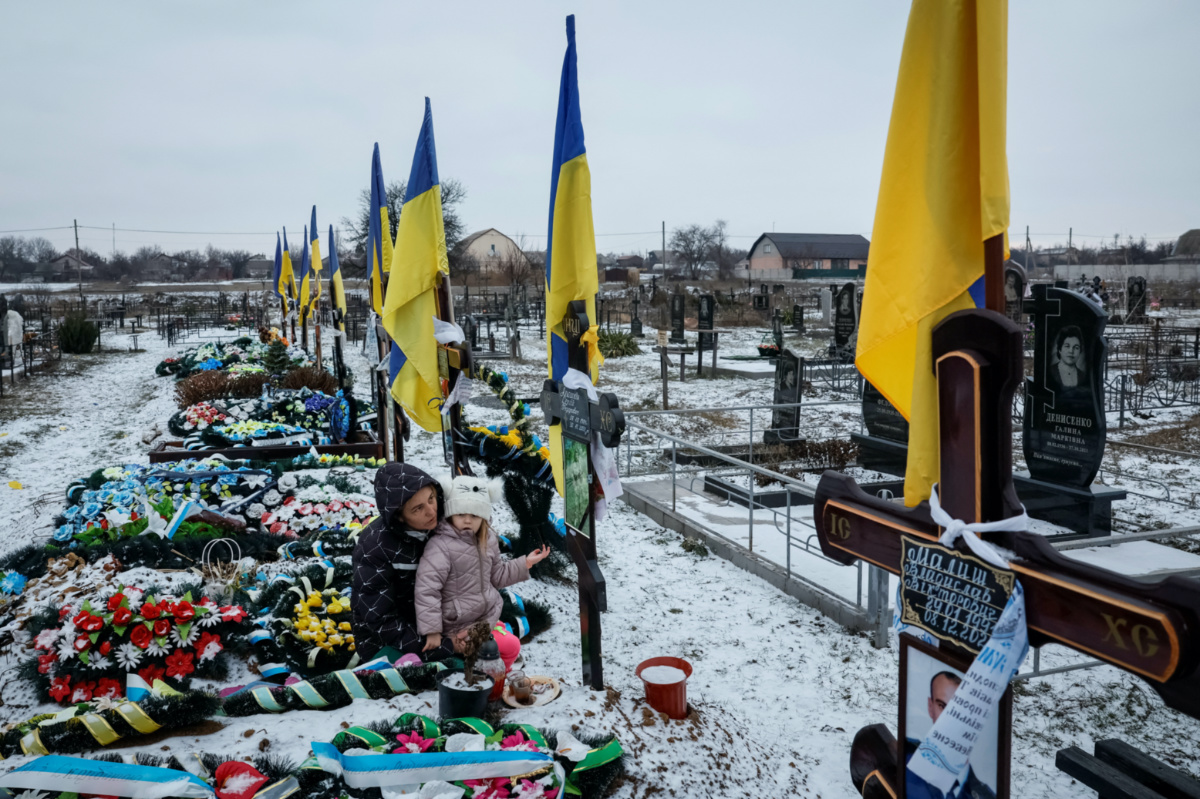
CHARLOTTE BRUNEAU, of Reuters, reports ahead of the second anniversary of the start of Russia’s full-scale invasion of Ukraine…
Lozuvatka, Ukraine
Reuters
Wives have become widows, parents long for captured sons, classrooms are empty and farmers can’t find the hands to work the land. Unlikely friendships have formed; old ones have fallen apart.
Even in the village of Lozuvatka, about 100 kilometres from the frontlines, signs are everywhere of a two-year-old war that has irrevocably changed the face of Ukraine.
Alona Onyshchuk and her five-year-old daughter Anhelina visited Lozuvatka’s graveyard on a snowswept winter’s day. Husband and father Serhii Aloshkin lies there alongside 10 other soldiers in a new section called Heroes’ Alley.
“We did not expect that there would be so many of them,” Onyshchuk murmured. Her 38-year-old partner, a driver and mechanic before the war, was killed in late 2022 while fighting near the eastern city of Bakhmut.

Alona Onyshchuk, 39, with her daughter Anhelina, five, visit her husband’s grave at the Alley of Heroes at a local cemetery, amid Russia’s attack on Ukraine, in the village of Lozuvatka, Dnipropetrovsk region, Ukraine, on 22nd January, 2024. PICTURE: Reuters/Alina Smutko
Similar burial plots have appeared across the country, bearing bitter testament to a grinding war against Russia that’s now entering its third year, with no end in sight.
Mounds of freshly dug earth are often marked by simple wooden crosses, photos of the dead, brightly coloured flowers and yellow-and-blue Ukrainian flags.
“We did not expect that there would be so many of them.”
– Alona Onyshchuk, referring to the number of graves in a new section of Lozuvatka’s graveyard dedicated to soldiers killed in the war called Heroes’ Alley.
The fighting on Ukraine’s eastern and southern fronts is far away from this settlement of modest homes surrounded by walled gardens in the centre of the country, but its population of about 6,800 has been profoundly affected.
The scale of Ukrainian military casualties is a closely guarded state secret. Western officials estimate tens of thousands have been killed and tens of thousands more wounded. Russia, in the ascendancy on the cusp of the second anniversary of its 24th February, 2022 invasion, has also suffered heavy losses.
Beyond casualties, the war impacts almost every aspect of Ukrainian life. Onyshchuk quit her job in a grocery store when she got pregnant with Anhelina, and finding new work has been made tougher by the fact that the local kindergarten has closed.
Schools in Lozuvatka, located around 350 kilometres south-east of Kyiv, are also shut. Their bomb shelters aren’t big enough to accommodate all of the students in the event of an air raid.
Although direct Russian missile and drone attacks on the village are rare, it lies close to the key steel-producing town of Kryvyi Rih which has been struck frequently, triggering sirens in surrounding areas.
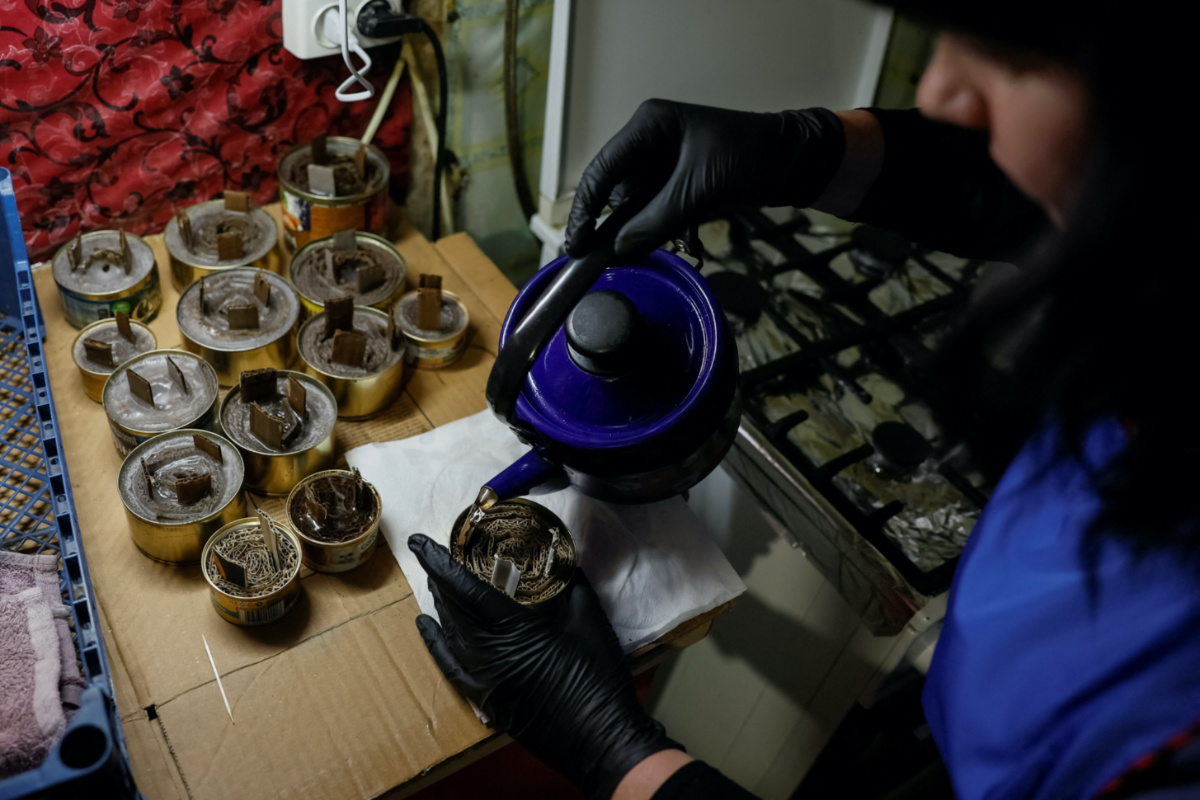
Svitlana Verbytska, 46, a teacher at a local school, makes trench candles for Ukrainian servicemen, amid Russia’s attack on Ukraine, in the village of Lozuvatka, Dnipropetrovsk region, Ukraine, on 20th January, 2024. PICTURE: Reuters/Alina Smutko
In one of Lozuvatka’s three schools, teacher Svitlana Anisimova stands before her computer in an empty classroom as she delivers an online lesson about the solar system to a group of 10 and 11-year-olds.
The UN children’s fund UNICEF said in August that only about a third of school-aged children across Ukraine attended classes fully in person. More than 1,300 schools had been destroyed altogether in government-held areas of the country, it added.
Anisimova said remote education couldn’t replace attending classes, and not only for academic learning.
“Of course I see that this has a big impact on children, on their social abilities,” the 35-year-old said, sitting at a children’s desk. “They don’t get the opportunity to communicate with each other.”
About 40 of the 136 students in the school have a parent who is currently mobilised and serving in the military, according to school principal Iryna Pototska.
In the same building, Pototska helps local women pack up boxes with food and drink, as well as camouflage netting, to be sent to Ukraine’s military.
Such volunteer networks have sprouted up across the country, a vital source of supplies for soldiers, given how stretched the armed forces are.
Yuliia Samotuha, another teacher at the school, coordinates the village’s volunteer effort, receiving requests from military units, dividing up the work among households and delivering goods to be packed into boxes.
“When you are busy, you sometimes stop thinking about the war,” said the 34-year-old, who is on maternity leave.
Driving along icy roads to one of her fellow volunteers, she said the village had changed a lot since the beginning of the war. She said she’d parted company with many friends because some were less willing to help the war effort than others.
“Many of them proved who they are,” she added. “Strangers became like relatives to me.”

Women sell food products in a local market, amid Russia’s attack on Ukraine, in the village of Lozuvatka, Dnipropetrovsk region, Ukraine, on 24th January, 2024. PICTURE: Reuters/Alina Smutko
As well as the dead, there are the missing.
Ukrainian officials say about 8,000 people – civilians and soldiers – are in Russian captivity as a result of hostilities.
Some 3,000 people, mostly military, have been freed in dozens of prisoner of war exchanges, but thousands of families have been left to ponder the fate of captured relatives.
Among them are Lozuvatka residents Tetiana Terletska and Yurii Terletskyi, who said their 29-year-old son Denys joined the National Guard in 2021 and was captured while fighting in the southeastern Ukrainian port city of Mariupol in May 2022.
Ukrainian forces there struggled for months to repel Russia’s invasion in some of the bloodiest fighting of the war, before Kyiv ordered them to surrender when further defence looked doomed.
We rely on our readers to fund Sight's work - become a financial supporter today!
For more information, head to our Subscriber's page.
“We want to show that nobody has forgotten them,” Terletska said at a demonstration by dozens of people in Kryvyi Rih demanding that the government do all it can to free captives. “We will always keep fighting for them as they fought for us.”
The parents described how they were racked by constant pain and anxiety about their son’s fate, which they tried to temper with hope that they would one day get him back alive.
“This is very difficult,” Terletska said in her kitchen in Lozuvatka. “It is 2024 and we still don’t have any news. I don’t know anything about my son.”
Terletskyi added: “Sometimes, I dream of him. I want to see him again, I want him to come home.” He sighed heavily.
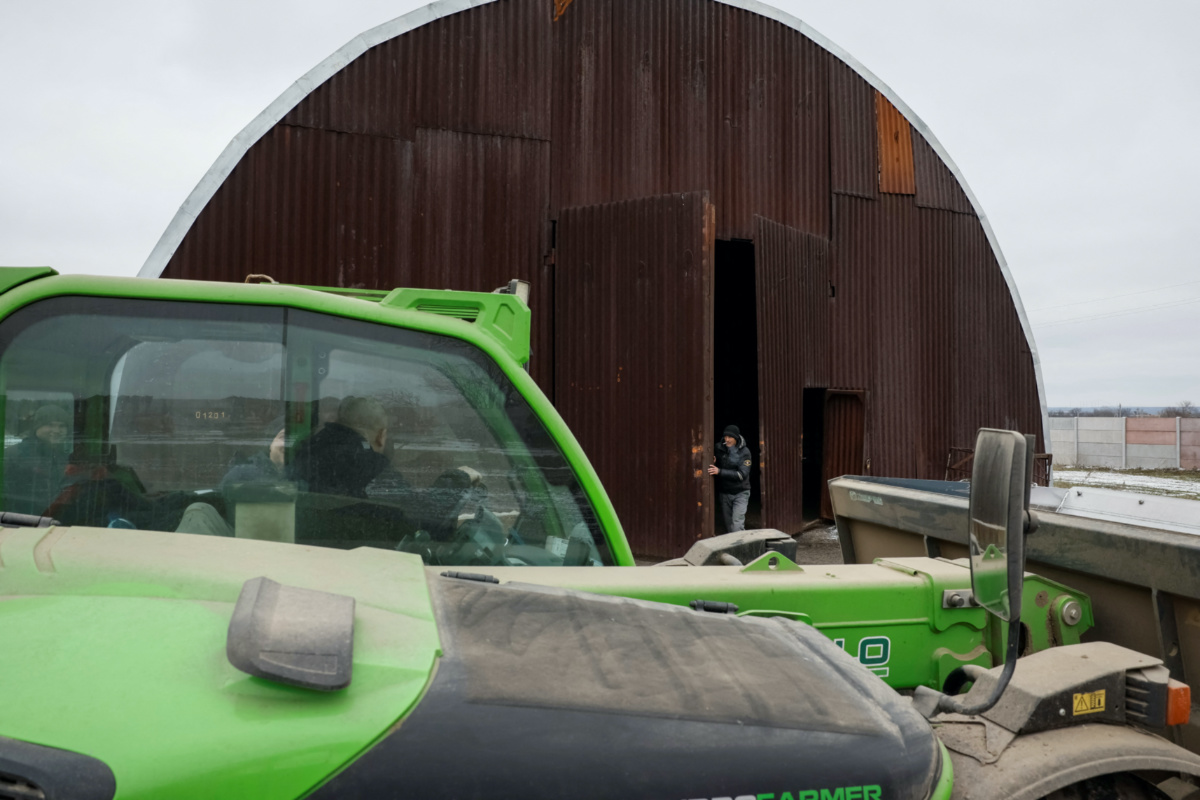
Employees of a local farm prepare to load sunflower seeds into a truck near a storage facility, amid Russia’s attack on Ukraine, near the village of Lozuvatka, Dnipropetrovsk region, Ukraine, on 23rd January, 2024. PICTURE: Reuters/Alina Smutko
At a large local farm, owner Oleksandr Vasylchenko has lost vital staff to the armed forces and fears more will leave soon. He is worried that the machinery he needs to harvest sunflowers, wheat and barley will break down.
According to local authorities, more than a third of skilled farm workers in Lozuvatka have been mobilised into the military, underlining the impact of the war on agriculture, a backbone of Ukraine’s economy.
“Many specialists and mechanics from our community were mobilised. Our equipment needs repairing,” Vasylchenko, 42, said in his workshop, adding that it would take time to train new staff. His business is no longer making a profit and he is funding its operations partly from savings.
Those challenges present a deep dilemma for Kyiv as it seeks to mobilise another 450-500,000 Ukrainians: If it tries to recruit too many people, it could end up damaging an economy already ravaged by the war.
In the village, Anastasiia and Oleksandr Korobchenko are staying in a house their friends helped them find after they fled their home in the Luhansk region to the east as Russian forces advanced at the start of the 2022 invasion.
They are among 3.7 million Ukrainians internally displaced by the fighting, according to a study by the World Bank, United Nations, European Commission and Ukrainian government. Another 5.9 million remain displaced outside Ukraine, it found.
Although the Korobchenkos have found jobs in Lozuvatka, they are holding off starting a family for now.
“When you don’t know what will happen to you tomorrow, it’s very hard to even think about living with a child,” said 23-year-old Anastasiia. “It is really difficult.”
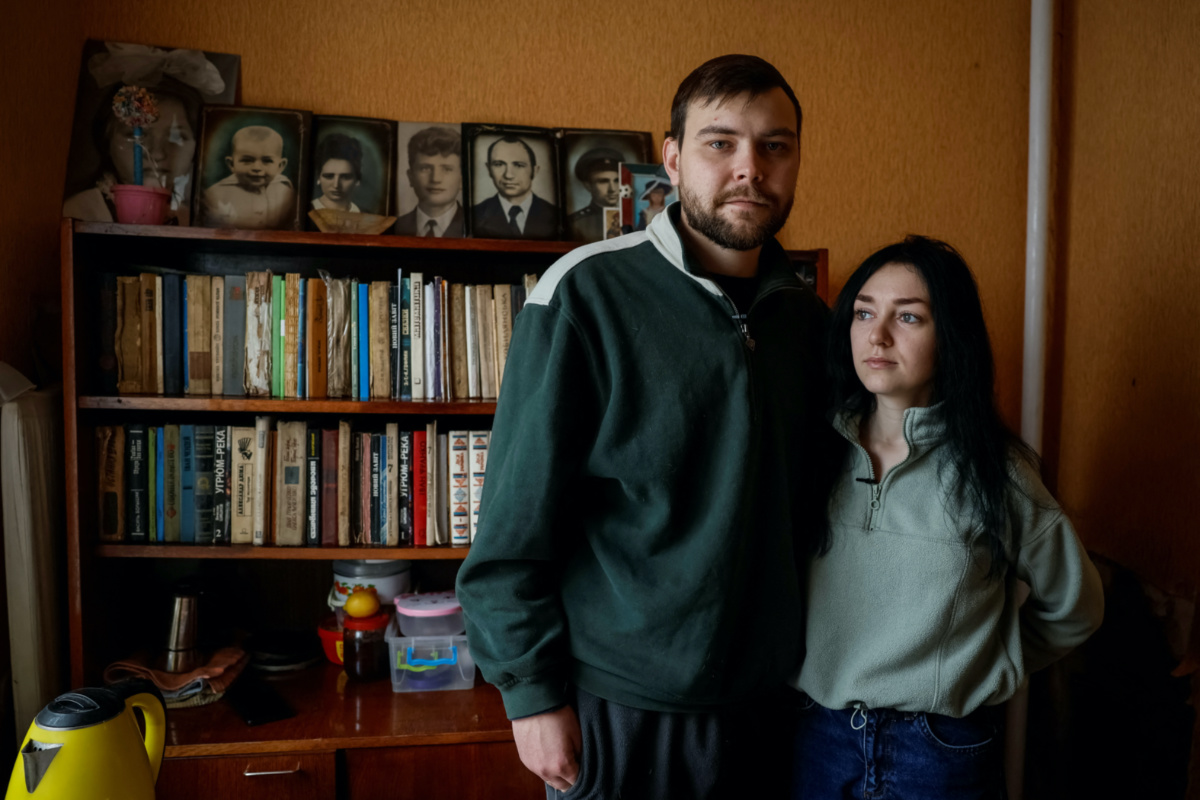
Oleksandr Korobchenko, 29, and Anastasiia Korobchenko, 23, internally displaced people from the town of Rubizhne in Luhansk region, stand in their temporary home, amid Russia’s attack on Ukraine, in the village of Lozuvatka, Dnipropetrovsk region, Ukraine, on 21st January, 2024. PICTURE: Reuters/Alina Smutko
Sitting behind her desk at the local library where she now works, she said that Ukrainian territory occupied by Russia should be fought for to the bitter end.
That sense of defiance is common in Ukraine, even as its forces come under increasing pressure from a larger and better equipped army and Western military support for Kyiv wavers.
“My heart aches for the Luhansk and Donetsk regions and for Crimea, because they are in Ukraine,” she said. “These are our territories, our people live there. We should not give up.”
– Additional reporting by ALINA SMUTKO in Lozuvatka and PAVEL POLITYUK and OLENA HARMASH in Kyiv





